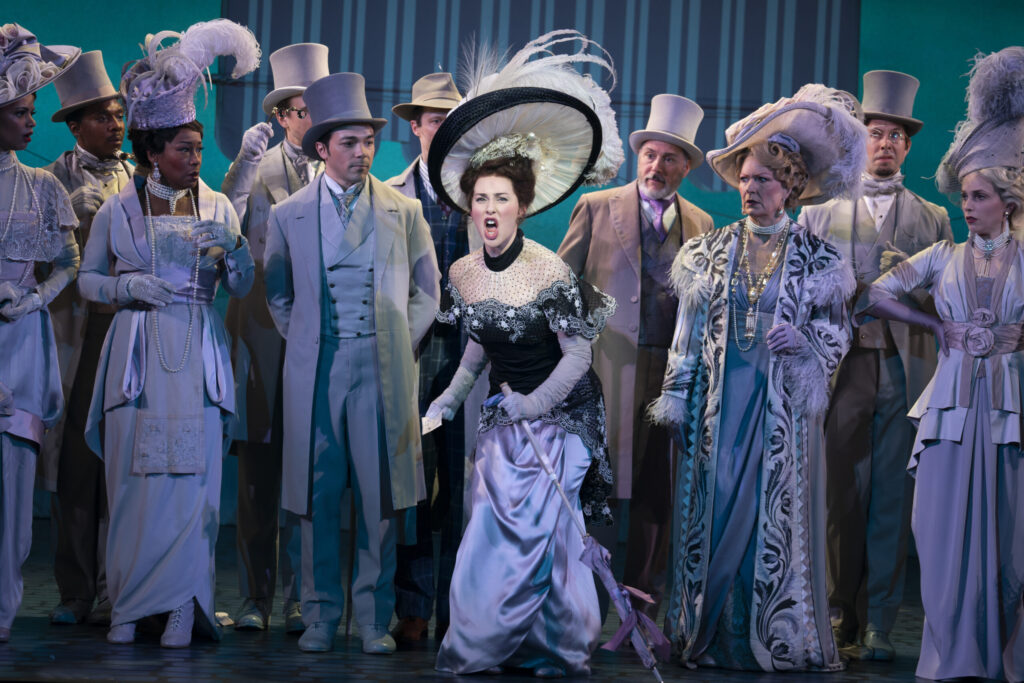
Tennessee Performing Arts Center has had many touring companies on Jackson Hall’s stage since 1980. Having attended more shows there than I can numerically recall, there have certainly been performances where a touring company’s “straight from Broadway” billing wasn’t justified in terms of the actors on that stage. This week’s sparkling visit from the “Into the Woods” revival troupe does deserve that paramount promotion, however – it is a high-quality delight from start to finish.
The 1987 Stephen Sondheim (music and lyrics)/James Lapine (book) post-modern take on European fairy tales has its fun but grows, well, a little grimmer in its pursuit of the point that happy endings depend on when the story stops – and that we are all responsible for one another. It’s a good thing that “Into the Woods” doesn’t end with its first act, for the poignant emotions stirred by such Act II songs as “No More,” “No One Is Alone,” and “Children Will Listen” are truly a rewarding coda.

Two acts and a 20-minute intermission make this production a three-hour experience, but the time flies by thanks to the quality of the cast, the compassionate vision of director Lear deBessonnet (who helmed this 2022 revival for New York City Center’s “Encores!” concert series and on Broadway), the entertaining choreography of Lorin Latarro, and the onstage top-tier mix of 16 touring or local musicians conducted by music director John Bell.
If you saw this show before it closed on Broadway in January you’d have essentially seen the performers assembled for this 10-city engagement tour. And in the case of Tony Award and Olivier Award-winning actor Gavin Creel (whose tremendous talents are on full display as the Wolf and Cinderella’s Prince), David Patrick Kelly (absolutely on-point as the Narrator and the Mysterious Man), and Kennedy Kanagawa (Milky White’s wonderfully demonstrative actor/puppeteer) you’d have seen performers who appeared in “Into the Woods” at both New York City Center and the St. James Theatre.

Real-life wife and husband Stephanie J. Block (a Tony winner for “The Cher Show“) and Sebastian Arcelus bring their personal chemistry and superb professional singing and acting talents to the roles of the Baker and his wife: “It Takes Two,” indeed. Katy Geraghty is a real hoot as Little Red Ridinghood, and her Broadway Belt is as good as her comic timing. Cole Thompson makes your heart ache as sweet, simple Jack; Aymee Garcia as Jack’s long-suffering mother pulls at those heartstrings too. And Montego Glover‘s Witch? Her acting and singing are so powerful you’ll truly believe her magic from start to finish. “Children Will Listen” and so should we all to this superlative player.
Every other member of this cast deserves praise as well. Diane Phelan’s compassionate Cinderella; Nancy Opel’s not-so-nice Stepmother; Ta’Nika Gibson and Brooke Ishibashi’s spoiled Lucinda and Florinda; Jim Stanek’s stolid Steward; the “Agony” of Jason Forbach as Rapunzel’s Prince; Alysia Velez as his towered damsel in distress Rapunzel; Felicia Curry’s tasty triple as Granny/Giant/Cinderella’s Mother; and Josh Breckenridge’s animated turns as a puppeteering flock of birds and as Cinderella’s Father.

Bountiful birch trees line David Rockwell’s enchanting set while Tyler Micoleau’s lighting ably shifts us from the lighter to darker shades of this performance. So happy with the sound designs of Scott Lehrer and Alex Neumann: making essential amplification that calls no attention to itself is a true art. Other artisans for this production – including costume designer Andrea Hood; hair, wigs, and makeup designer Cookie Jordan; and puppet designer James Ortiz – bring their plentiful talents to bear on aspects of this show that add more grace, charm and vitality to this splendid tour.
If there’s any chance you can go to this “Into the Woods” before it leaves Nashville I strongly encourage you to do so. It will be a pleasant memory for all that see it “Ever After.”


The national tour of “Into the Woods” continues in TPAC’s Andrew Jackson Hall through Sunday, May 28. For times and tickets please click here.
(All photos courtesy TPAC and the “Into the Woods” tour. Photos by Matthew Murphy and Evan Zimmerman.)








































 NASHVILLE, Tenn. – Imagine a live theatrical broadcast/online experience that offers 32 of Nashville’s finest actors with a “
NASHVILLE, Tenn. – Imagine a live theatrical broadcast/online experience that offers 32 of Nashville’s finest actors with a “


















